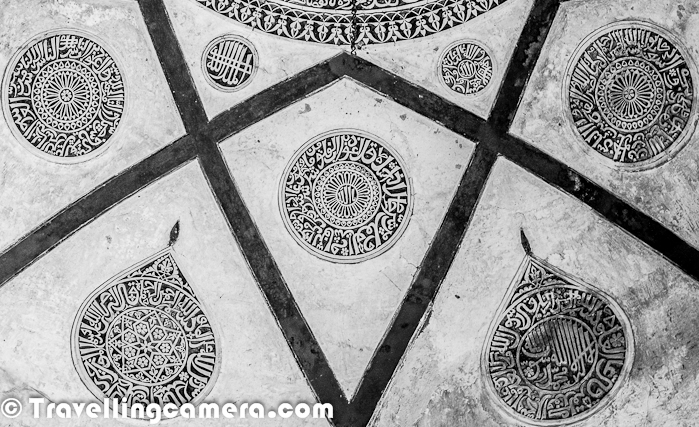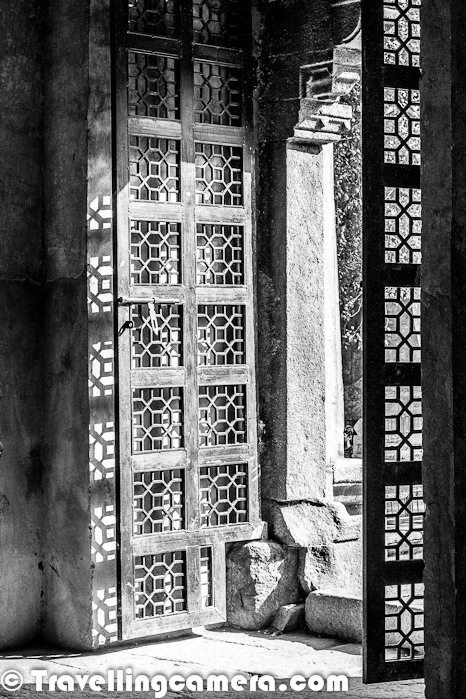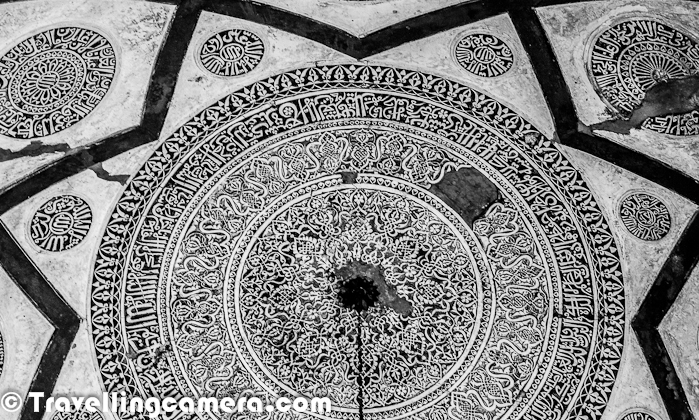Firoz Shah's Tomb at Hauz Khas Village in Capital City of India - Delhi || Ruins of Hauz Khas Village
Apart from visiting the Royal Tank, Deer Park and various restaurants of Hauz Khas Village we also spent some time around Firoz Shah's Tomb in Green park, Delhi. Let's have a Photo Journey to the place with some information picked from various sources...
The very first photograph of this PHOTO JOURNEY is main entry into the Tomb of Firoz Shah, his two Sons and a Grandson. The above Photograph is not exactly Tomb but some other ruins in the garden of Hauz Khas Village in Delhi.
Firoz Shah's Tomb at Hauz Khas Village was repaired during the reign of Sikandar Lodhi in 1507 AD. This is evidenced from an inscription on the entrance. The main impression is one of solidity and lack of decoration, which is typical part of Tuglaq Style. Apart from this Tomb there is a Madarasa, Pavillions, Mosque as well...
Among the notable buildings of historical importance that Firoz Shah built within Hauz Khas Village precincts is the domed tomb for himself. The tomb which is very austere in appearance, is located at the intersection of the two arms of the L–shaped building which constitutes the madrasa.
Firuz Shah who had established the tomb, ascended the throne in 1351 when he was middle aged, as the third ruler of the Khilji dynasty and ruled till 1388. He was considered a well–liked ruler. His wife was a Hindu lady and his trusted Prime Minister, Khan-i-Jahan Junana Shah was a Hindu convert.
Firoz Shah's Tomb at Hauz Khas Village is a square chamber which is made of local quartzite rubble with a surface plaster finish that sparkled in white color when completed. The door, pillars and lintels were made of grey quartzites, while red sandstone was used for carvings of the battlements.
Entry to the tomb is through a passage in the south leading to the doorway. The passage wall is raised on a plinth which depicts the shape of a fourteen phased polyhedron built in stones. Three horizontal units laid over eight vertical posts that are chambered constitute the plinth. Squinches and muqarnas are seen in the solid interior walls of the tomb and these provide the basic support to the octagonal spherical dome of the tomb.
Firoz Shah assisted by his Prime Minister was responsible for building several unique monuments (mosques, tombs, pavilions), hunting lodges and irrigation projects (reservoirs) in his domains, apart from establishing and constructing a new Citadel (palace) in his new city of Firuzabad. Feruz died at the age of ninety due to infirmities caused by three years of illness between 1385 and 1388. On his death, his grandson Ghiya Suddin was proclaimed as his successor to the throne. During his enlightened rule he abolished many vexatious taxes, brought in changes in the laws on capital punishment, introduced regulations in administration and discouraged lavish living styles. But the most important credit that is bestowed on him is for the large number of public works executed during his reign namely, 50 dams for irrigation across rivers, 40 mosques, 30 colleges, 100 hospitals, 100 public baths, 150 bridges, apart from many other monuments of aesthetic beauty and entertainment.
The width of the gate is equal to one-third of tombs' width. The entrance hall has fifteen bays and terminates in another doorway which is identical to the gateway at the entrance.
The door way of Firoz Shah's Tomb at Hauz Khas Village depicts a blend of Indian and Islamic architecture. Another new feature not seen at any other monument in Delhi, built at the entrance to the tomb from the south, is the stone railings.
The second doorway of the Hauz Khas Tomb leads to the tomb chamber and cenotaph, which are accessed from the gateway through the L–shaped corridor. Similar arrangement is replicated on the western doorway of the tomb leading to the open pavilion on the west.
There are four graves inside the tomb, one is of Feruz Shah and two others are of his son and grand son...
The ceiling in the dome depicts a circular gold medallion with Quranic inscriptions in Naksh characters. Foliated crenellations are seen on the outer faces of the base of the tomb. Interesting features seen on the northern and southern sides of the tomb, considered typical of the Tuglaq period layout, are the ceremonial steps provided at the ground level that connect to the larger steps leading into the reservoir.
The maximum height of the tomb is on its face overlooking the reservoir. The domed gateway on the north has an opening which has height equal to two–thirds the height of the tomb.
More details about Firoz Shah's Tomb in Hauz Khas Village can be seen at http://en.wikipedia.org/wiki/Hauz_Khas_Complex

















.jpg)
Comments
Neo Poly Dex